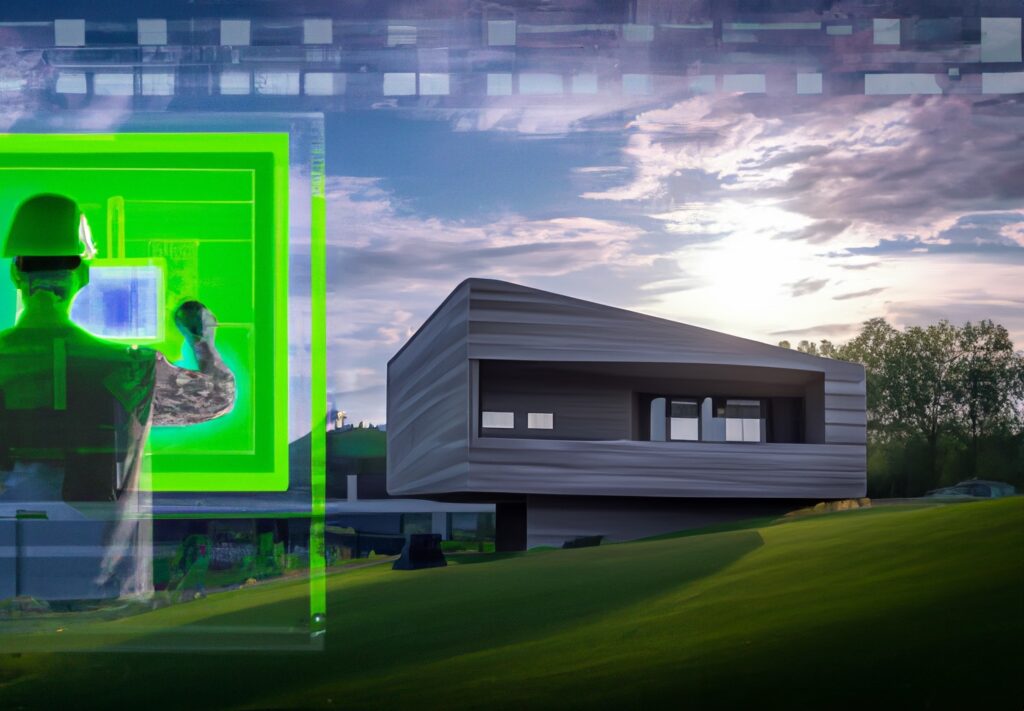Chapter 1: The Architectural Revolution Unveiled
In an era marked by rapid technological advancement, we as architects find ourselves at a crossroads. The convergence of architecture and Artificial Intelligence (AI) is poised to redefine the profession fundamentally. As we contemplate the immense potential and challenges AI presents in architecture, it is imperative to explore how architects can secure their place in this transforming landscape. This article delves into the dynamic interplay between AI and architecture, highlighting opportunities, risks, and the skills architects must cultivate to navigate an increasingly automated world.

Chapter 2: AI’s Design Potential
One of the most captivating opportunities AI offers is the ability to conceive designs previously unattainable through traditional means. AI’s capacity to generate a myriad of design options in mere minutes empowers architects to swiftly assess and compare alternatives, facilitating data-driven decisions. This transformative capability enables architects to save resources, and time, and, most importantly, deliver high-quality designs that precisely align with their clients’ needs.
Chapter 3: Optimising Building Performance
AI’s foray into architecture extends beyond design ideation. It extends to analysing and optimising building performance, incorporating factors such as energy efficiency, comfort, and sustainability. By simulating real-time building performance, architects can identify areas for enhancement and promptly refine their designs for optimum functionality. This newfound capability allows architects to create buildings that are not only energy-efficient and sustainable but also adaptable to evolving client requirements.
Chapter 4: Guarding Against Algorithmic Bias
The integration of AI introduces a significant risk: algorithmic bias. If AI algorithms are trained on biased datasets, they may inadvertently perpetuate design and building biases. This chapter underscores the need for architects to ensure transparency and impartiality in AI systems’ decision-making processes. A conscious effort is required to prevent AI from inadvertently homogenising architectural creativity.
Chapter 5: Navigating the Potential for Job Displacement
AI’s emergence in architecture also carries the spectre of job displacement. Automation threatens to alter the landscape of the design and construction industry, raising concerns about the future of architects and other professionals. Architects must not succumb to fear but instead actively cultivate new skills and competencies in alignment with the evolving demands of an automated world. Collaboration with AI providers is essential to ensure that AI technology aligns with the industry’s broader needs.
Chapter 6: Embracing Change and Adaptation
AI’s introduction into architecture marks a pivotal moment in the field’s evolution. Architects must not merely embrace technological changes but also embrace the necessity of constant adaptation. While automation may push architects out of their comfort zones, it simultaneously invites them to harness their innate creativity and innovation. Architects need to sharpen their critical thinking, problem-solving abilities, data analysis skills, and digital literacy. Collaborative efforts with multidisciplinary teams become paramount.
Chapter 7: Architects as Innovators
In a world where innovation and creativity reign supreme, architects are called upon to embrace their inner child and channel their inner Picasso. This chapter underscores the enduring importance of creativity in architecture and the need to explore new frontiers of design through AI’s assistance. Architects must remain at the forefront of innovation, pioneering new architectural expression and problem-solving approaches.
Chapter 8: Mastering Digital Literacy
The architects of the future must master digital literacy to harness AI’s potential effectively. Data analysis, AI tools, and software proficiency are no longer optional but essential.
Chapter 9: The Power of Collaboration
In the age of AI, collaboration emerges as a cornerstone of architectural practice. Architects must work harmoniously within multidisciplinary teams, leveraging the strengths of diverse expertise. The emphasis needs to be on the value of teamwork in achieving holistic and innovative architectural solutions.
Chapter 10: Architects as Architects of Change
Ultimately, architects hold the reins to shape the future of their profession and redefine architecture itself. By seizing the opportunities AI presents and actively contributing to its development, architects can secure their place in the industry’s evolution. Architects need to be pioneers of change, leading the way towards a future where architecture and AI synergise to create visionary designs and sustainable solutions.
In this brave new world of architectural evolution, architects have a choice: lead the charge or risk being left behind. The future beckons, and it is now within their power to shape it, ensuring that the timeless art of architecture thrives in the age of AI.
If you would like to talk through your project with the team, please do get in touch at mail@risedesignstudio.co.uk or give us a call at 020 3290 1003
RISE Design Studio Architects company reg no: 08129708 VAT no: GB158316403 © RISE Design Studio. Trading since 2011.
